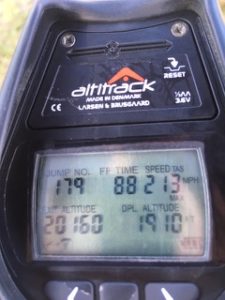 A Perfect Storm happened this hiking season on Mt. Everest. A combination of rookie climbers, unqualified Sherpas (guides), unexpected bad weather, limited oxygen supplies and other factors contributed to the high mortality rate. It is estimated that there were over 800 hikers on the mountain at one time this month.
A Perfect Storm happened this hiking season on Mt. Everest. A combination of rookie climbers, unqualified Sherpas (guides), unexpected bad weather, limited oxygen supplies and other factors contributed to the high mortality rate. It is estimated that there were over 800 hikers on the mountain at one time this month.
The NY Times wrote .. “The path to the top is so narrow and steep, climbers have to step very gingerly around others who have fallen ill or died. Some of the dead had apparently run out of bottled oxygen, partly because the horde of climbers trying to get to the top at the same time caused major delays.”
On May 29, 2019, a commentator on the National Public Radio (NPR) was asking the audience what can be done to avoid these tragic deaths? The discussion was focused more on mountain climbing qualifications and health certifications but we think our technology that efficiently delivers both oxygen to the body and provides cellular hydration needs to be seriously considered by the extreme trekkers.
WIT Technology’s Hydration Respiration
 We are aware of private jet pilots who will monitor their blood oxygen levels and instead of turning on expensive supplemental
We are aware of private jet pilots who will monitor their blood oxygen levels and instead of turning on expensive supplemental oxygen in the cabin, they drink Watt-Ahh and watch their blood ox return back to normal. Extreme skydivers also avoid using heavy and bulky oxygen-delivery equipment at high elevations by drinking Watt-Ahh to sustain to normal oxygen levels.
oxygen in the cabin, they drink Watt-Ahh and watch their blood ox return back to normal. Extreme skydivers also avoid using heavy and bulky oxygen-delivery equipment at high elevations by drinking Watt-Ahh to sustain to normal oxygen levels.
The DiTetra Gas (Dioxytetrahydride Gas) infused into Watt-Ahh provides an efficient oxygen delivery to the blood stream similar to that of hydration respiration. Although a physiological difference to our own respiratory system, gills of fish also provide hydration respiration such that water passes over the thin walls of gills and dissolved oxygen in the water moves into the blood and absorbs into the cells of the fish. We realize this is a stretch but drinking Watt-Ahh has some similarities to breathing underwater or even in low-oxygen atmospheric conditions.
Saving Lives in Adverse Conditions
According to the New York Times article cited above, one criticism of the Mt. Everest scene is that an increasing number of climbers are untrained and the climbers rely on Sherpas to do all the work for them, including carrying heavy oxygen cylinders. Granted, carrying bottled water is also a mountain-sized challenge but not any greater than that of carrying an oxygen cylinder. Or at the least, Watt-Ahh should be on every helicopter that is used to evacuate at great expense, climbers stricken with altitude sickness and respiratory dehydration.
Another idea that could save lives is a WIT Machine operated by solar power, can produce breathable DiTetra Gas on demand. A machine could be stationed at each base camp to fill canisters. Or maybe inventor Rob Gourley can make a small machine prototype that weighs less than that of an oxygen cylinder and can fit inside a backpack. This is something for NASA and SPACEX should consider as they advance towards building a new space station or colony on the moon.
Update on Extreme Skyjumper Alberto Spinelli
While I was preparing this blog, Alberto called to reorder Watt-Ahh. He told me that he recently returned from BASE jumping in Utah. Alberto made 6 jumps in one day after climbing 500 feet to the cliff for each jump. Alberto said other jumpers who are three decades younger than him could not keep up with him and they wondered how he got all of his energy … as he was drinking Watt-Ahh bottled water right in front of them.
Emergency Watt-Ahh should be in every backpack, definitely when someone goes into a thin-air environment.
Credit for the first photo above from a Google search.
